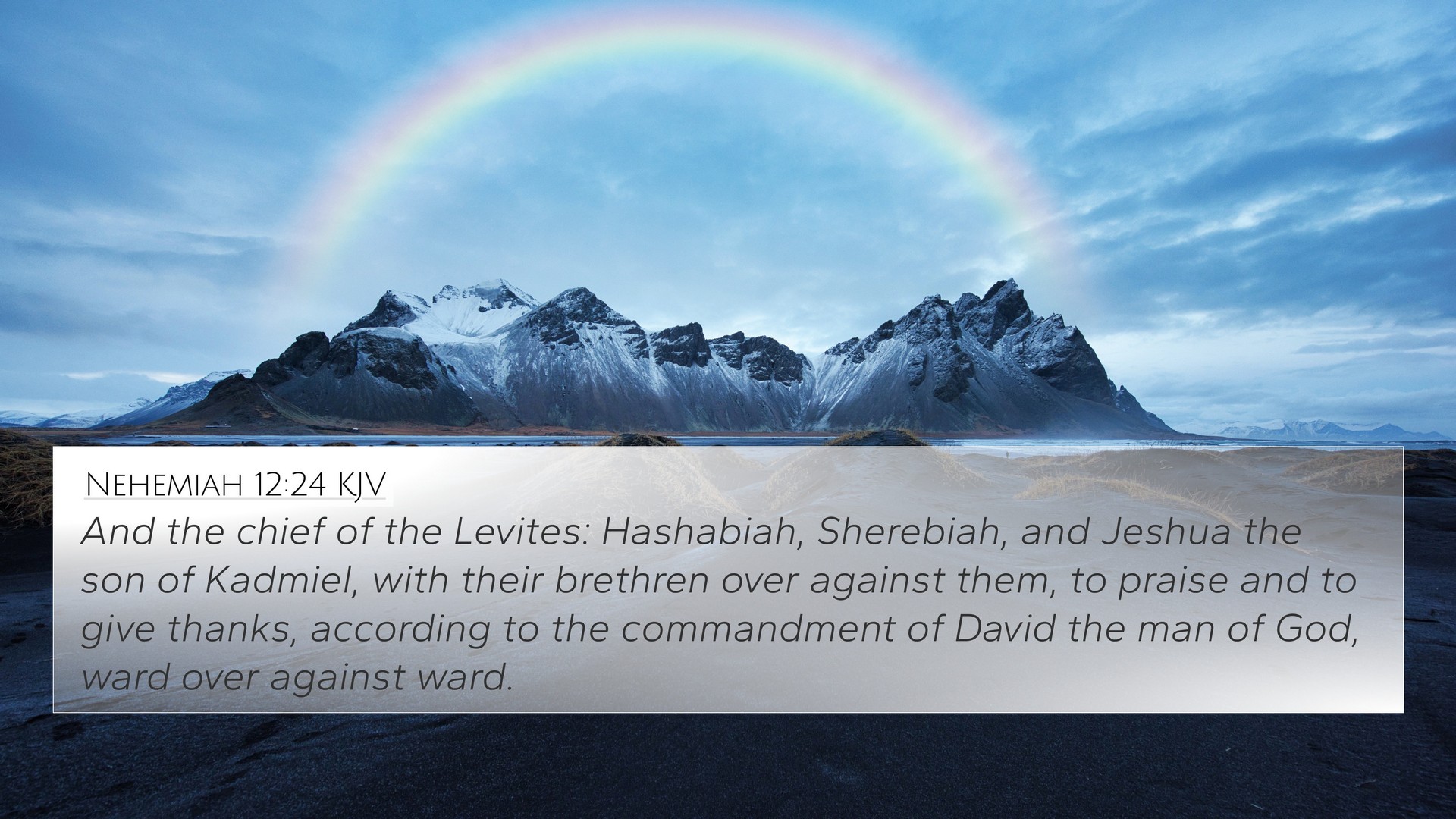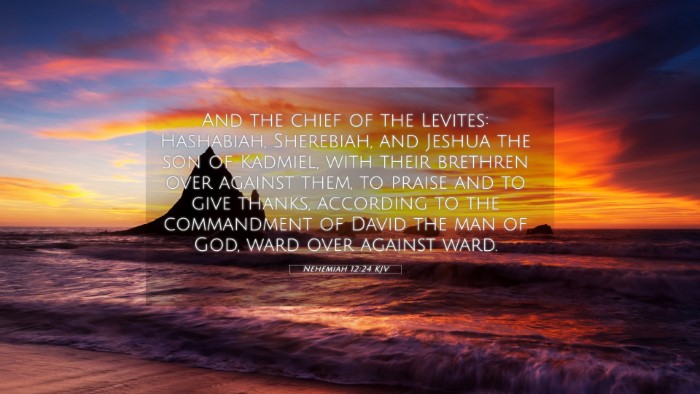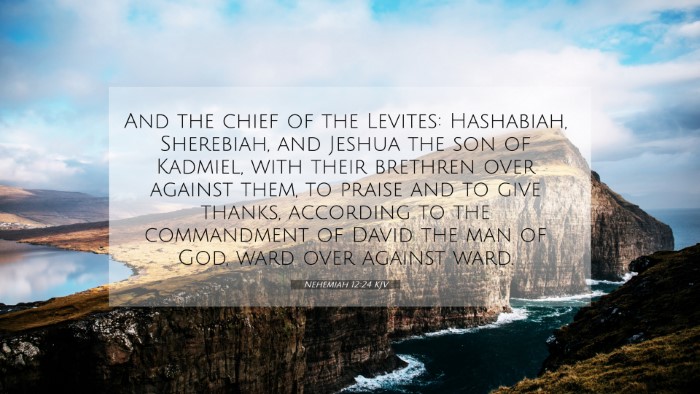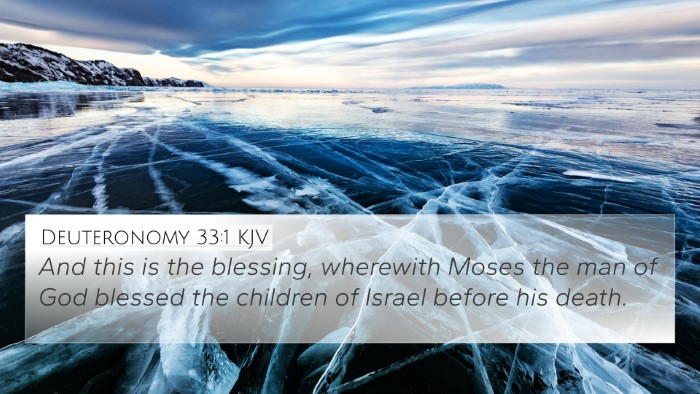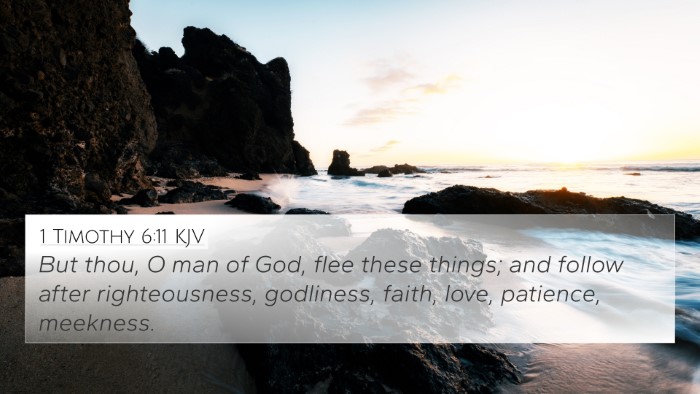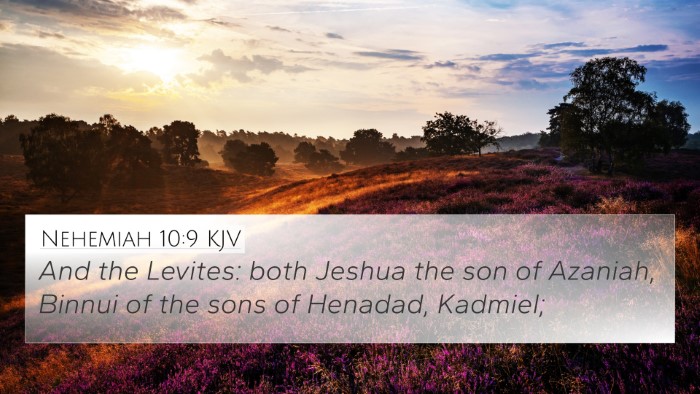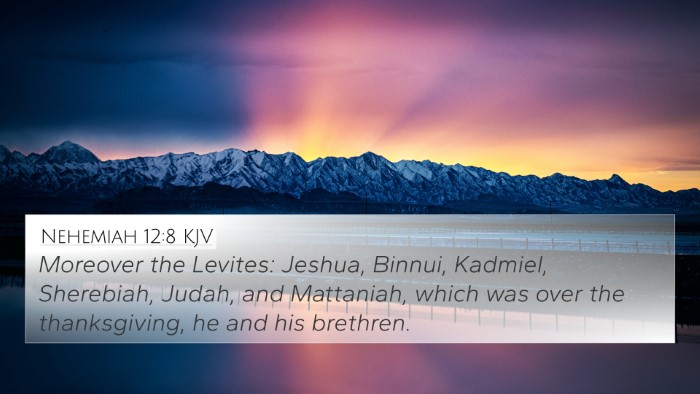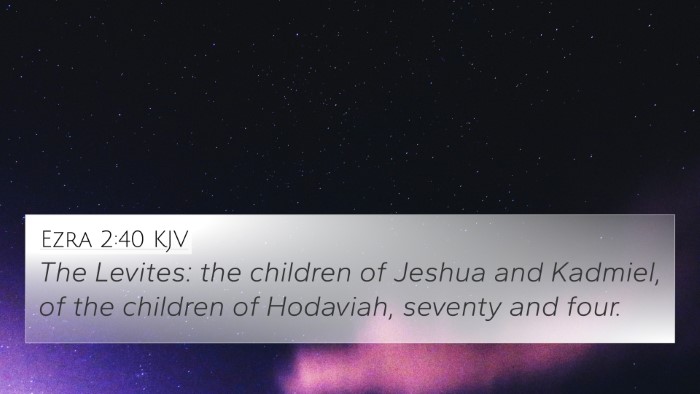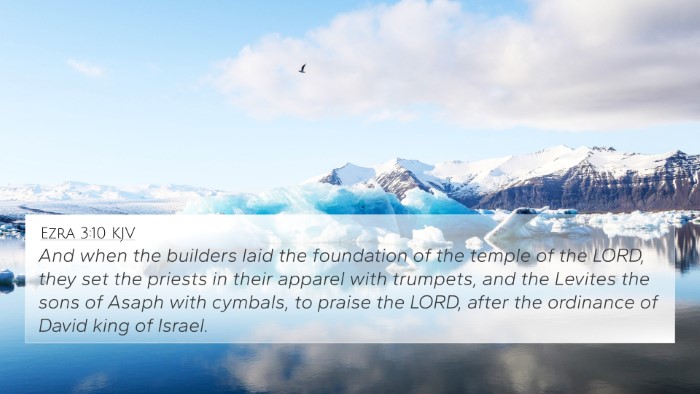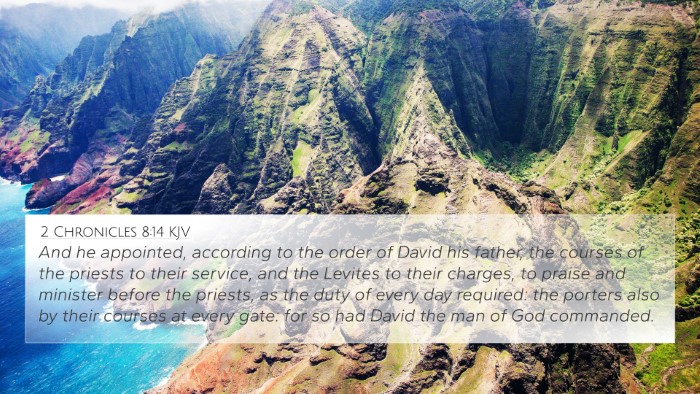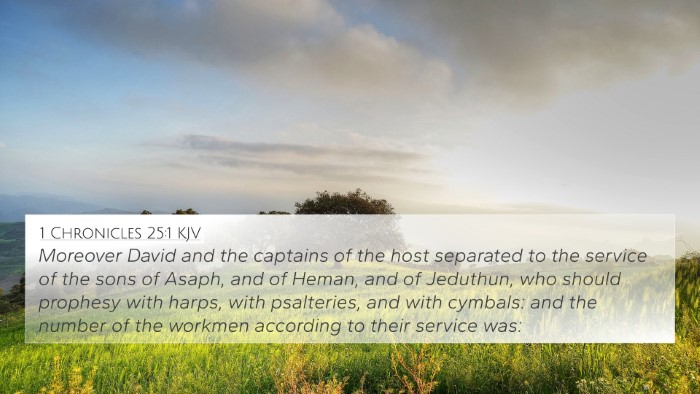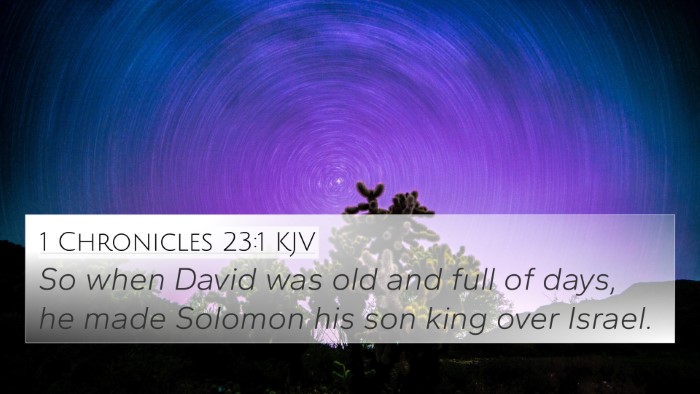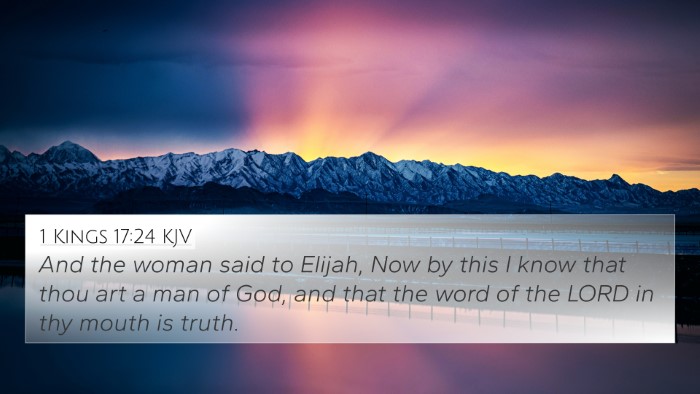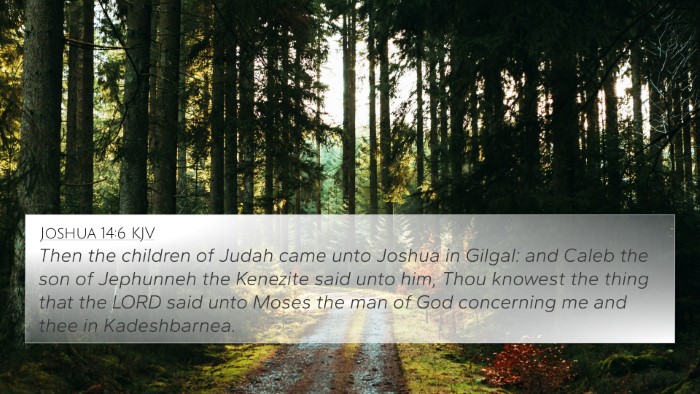Understanding Nehemiah 12:24
Nehemiah 12:24 states, "And the chief of the Levites: Hashabiah, Sherebiah, and Jeshua the son of Kadmiel, with their brethren over against them, to praise and to give thanks, according to the commandment of David the man of God, ward over against ward." This verse reflects the organization and responsibilities of the Levites during the time of the rebuilding of Jerusalem's walls and temple.
Summary of Insights from Public Domain Commentaries
This verse emphasizes several key themes and concepts found within the broader context of scripture.
Role of the Levites
Matthew Henry highlights the important function of the Levites in leading worship and praise. This was not only a task but a divine commandment, which underlines their sacred duty as mediators between God and the people.
Albert Barnes adds that the division of the Levites into groups for specific functions reflects an organized approach to worship and ensures that all aspects of temple service were attended to effectively. It showcases the Levites' dedication and the systematic structure laid by David.
Adam Clarke elaborates on the significance of the names mentioned, asserting that each of these chief Levites played a crucial role in fostering a spiritual environment following the exile. The name of David as "the man of God" is particularly emphasized to show that this organization was part of a continued tradition.
Thematic Connections
- Worship and Praise: The Levites’ roles highlight the importance of worship in isolation, as indicated by their structured duties.
- Historical Context: This verse shows how Nehemiah's reforms connected back to David's original intentions for the temple worship system.
- Covenant Faithfulness: The adherence to commands given by David implies a faithful response to God's covenant with Israel.
Cross-References
Understanding Nehemiah 12:24 is enhanced by several interconnected verses that shed light on worship, duties of the Levites, and their historical significance:
- 1 Chronicles 23:5 - Details the organization of the Levites and their tasks.
- 2 Chronicles 5:12-14 - Describes the role of the Levites during temple worship.
- Psalm 134:1 - Invites the Levites to bless the Lord, highlighting their calling to worship.
- Exodus 28:1 - Refers to the appointment of Aaron and his sons, establishing the priestly order.
- Ezra 6:18 - Confirms the restoration of the temple and the roles of the priests and Levites in temple service.
- Nehemiah 10:39 - Discusses the responsibilities of the priests and Levites in maintaining the worship of God.
- Isaiah 66:21 - Foretells future priests from among the descendants of Israel, linking the Levites to God's eternal plan.
Practical Applications
Studying Nehemiah 12:24 encourages believers to reflect on their roles in worship and community life:
- Understanding our gifts and how we serve in our communities.
- Recognizing the importance of structured worship and collective praise in church settings.
- Learning from historical leadership structures in scripture that guide modern practices.
Conclusion
The significance of Nehemiah 12:24 extends beyond its historical context. It teaches us the importance of established worship, the role of leaders within the church, and how past practices can inform present worship strategies. In future studies, utilizing tools for cross-referencing Biblical texts can greatly enhance understanding and application.
Further Study and Resources
For those interested in further exploring the links between biblical texts, consider using a Bible concordance or a Bible cross-reference guide. These resources can provide you with:
- Guidance on finding cross-references in the Bible.
- Methods for conducting cross-referencing Bible study.
- Identifying connections between the Old and New Testament.
